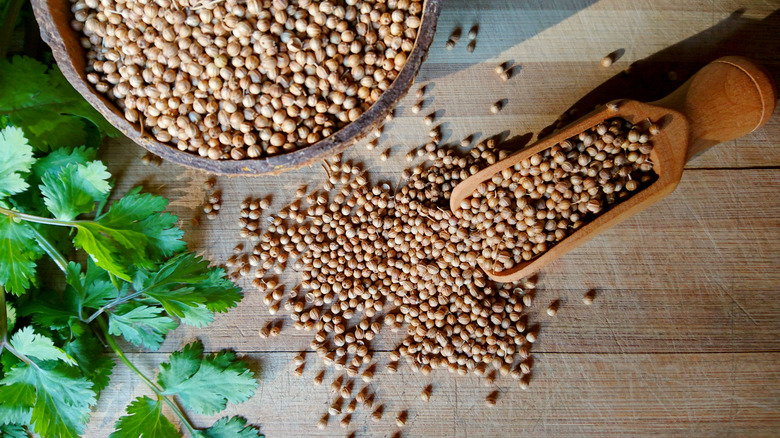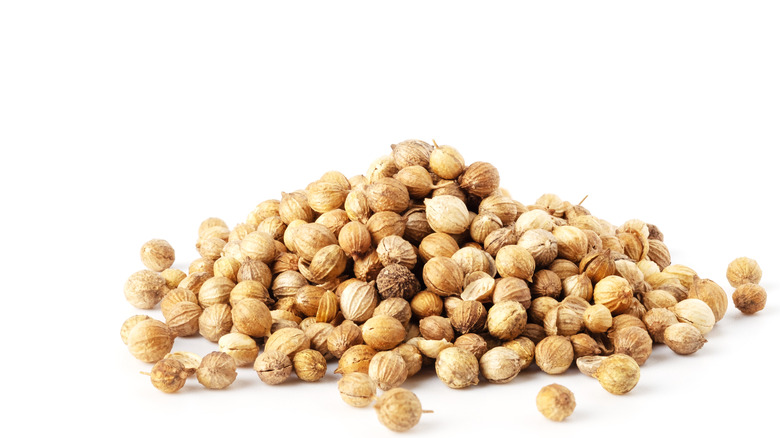Delicious Ways To Use Coriander Seeds In Your Cooking
While cilantro happens to be an immensely polarizing herb (you've surely heard of the whole "soapy" flavor gene discussion), its partner-in-crime, if you will, is much more mellow: coriander seed. Both hailing from the same plant, coriander are the seeds, whereas cilantro is the leafy parts that grow when the seeds are planted. Coriander seed is slightly citrusy, earthy, and has a slight spice or "bite."
The Epicentre notes that the seed has been around for "millennia" and was often found in Egypt, Sudan, and sometimes England. It is now found primarily in Russia, India, South America, North Africa, and Holland. Coriander is a standard ingredient in curry powders, garam masala, dukkah (or dukka), and in other spice blends and mixes. Coriander and cumin are often paired together. It is great with varying proteins, such as beef, fish, chicken, and pork. It also pairs beautifully with citrus of any kind, as well as spicier flavors like chili (via The Epicentre).
Coriander is sometimes ground before use, but some cuisines and cultures keep the seeds whole when cooking with them. It is especially delicious as part of a rub, when used with grilled foods, incorporated into dips or sauces, or even as an alternative toppings on fries, according to MySpicer. It is a warming spice — not spicy, per se — but it can definitely offer a kick.
How do I use coriander?
Toasting coriander seeds helps bring out their flavor and make them more aromatic. Its flavor is a bit more subtle than other spices, so it sometimes tends to be a bit less assertive in spice mixes, and it adds a complexity that sometimes goes unnoticed, according to Tasting Table. Coriander is also sometimes used in sweeter applications, like in shortbread cookies or cakes, and adds a slightly savory and aromatic note.
In terms of savory uses, coriander is a mainstay for curries and complements many vegetables, legumes, and grains nicely. It's even used in conjunction with pickling or brining. Aside from flavor, the spice offers a few health benefits, too. Coriander can alleviate stomach ailments and contains trace amounts of various minerals and vitamins. It is also helpful for your skin health, according to Spice It Upp.
One especially delicious spice blend with coriander is dukkah, according to Tasting Table. It is made of coriander, sesame, cumin, fennel, salt, mint, and a myriad of nuts, such as cashews, pistachios, and hazelnuts. How delicious does that sound? The ingredients are pulverized and then used in dips, as spice rubs, or in a multitude of other manners. Coriander's subtle, slight citrus flavor adds a depth and complexity to tons of varying dishes, so definitely don't shy away from using this somewhat under-utilized seed!

